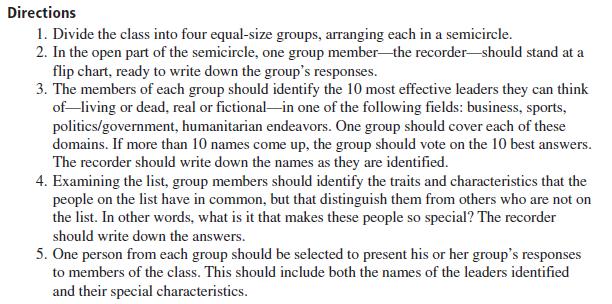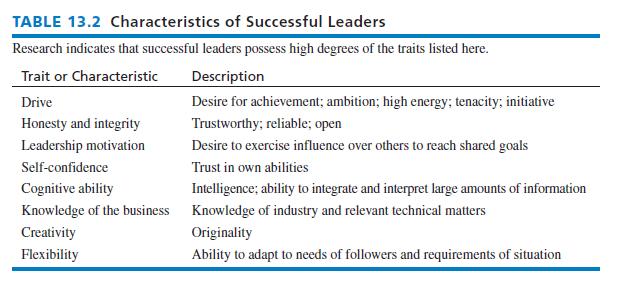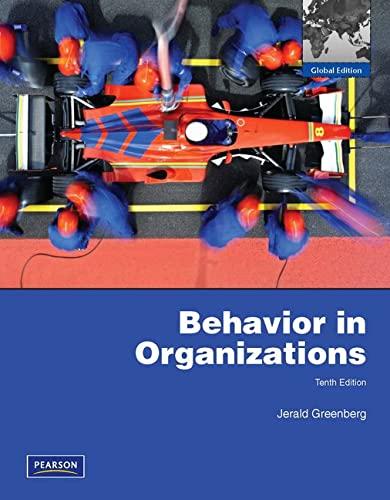Question:
A useful way to understand the great person theory is to identify those individuals who may be considered great leaders and then to consider what it is that makes them so great. This exercise is designed to guide a class in this activity.

Questions for Discussion
1. How did the traits identified in this exercise compare to the ones identified in this chapter (see pages 480–481 and Table 13.2) as important determinants of leadership? Were they similar or different? Why?
Data from table 13.2

2. To what extent were the traits identified in the various groups different or similar? In other words, were different characteristics associated with leadership success in different walks of life? Or were the ingredients for leadership success more universal?
3. Were some of the traits identified surprising to you, or were they all what you would have expected?
Transcribed Image Text:
Directions 1. Divide the class into four equal-size groups, arranging each in a semicircle. 2. In the open part of the semicircle, one group member the recorder-should stand at a flip chart, ready to write down the group's responses. 3. The members of each group should identify the 10 most effective leaders they can think of living or dead, real or fictional in one of the following fields: business, sports, politics/government, humanitarian endeavors. One group should cover each of these domains. If more than 10 names come up, the group should vote on the 10 best answers. The recorder should write down the names as they are identified. 4. Examining the list, group members should identify the traits and characteristics that the people on the list have in common, but that distinguish them from others who are not on the list. In other words, what is it that makes these people so special? The recorder should write down the answers. 5. One person from each group should be selected to present his or her group's responses to members of the class. This should include both the names of the leaders identified and their special characteristics.








